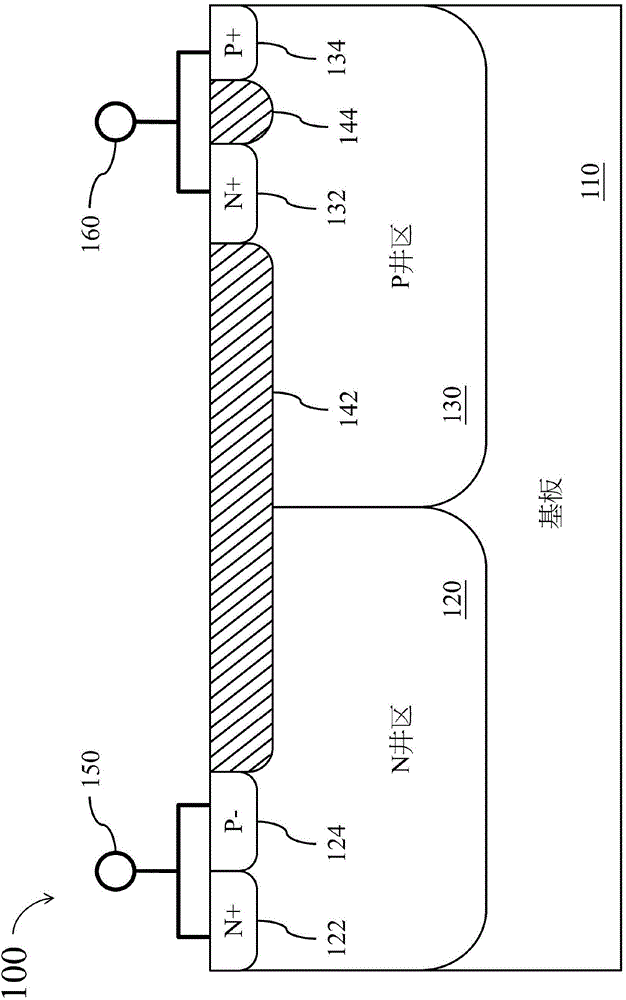Silicon controlled rectifier
A technology of silicon-controlled rectifier and doped region, which is applied to electric solid-state devices, semiconductor devices, semiconductor/solid-state device components, etc., can solve the problems of increasing the size of silicon-controlled rectifiers, increasing the complexity and cost of overall circuit design, etc. Achieve the effect of increasing the holding voltage and expanding the application range
- Summary
- Abstract
- Description
- Claims
- Application Information
AI Technical Summary
Problems solved by technology
Method used
Image
Examples
Embodiment Construction
[0022] Embodiments of the present invention will be described below in conjunction with related drawings. In the drawings, the same reference numerals represent the same or similar elements or method flows.
[0023] figure 1 It is a simplified cross-sectional view of a silicon controlled rectifier 100 according to an embodiment of the present invention. The silicon controlled rectifier 100 includes a substrate 110, an N well region (N well) 120, a P well region (P well) 130, a first N-type doped region (N-type doped region, N region) 122, a A first P-type doped region (P region, P region) 124, a second N-type doped region 132, a second P-type doped region 134, a first oxide isolation region (oxide isolation region) 142 , a second oxidation isolation region 144 , an anode terminal 150 , and a cathode terminal 160 .
[0024] Such as figure 1 As shown, the N-well region 120 is disposed on a first side of the substrate 110 . The P well region 130 is disposed on the first side...
PUM
 Login to View More
Login to View More Abstract
Description
Claims
Application Information
 Login to View More
Login to View More - Generate Ideas
- Intellectual Property
- Life Sciences
- Materials
- Tech Scout
- Unparalleled Data Quality
- Higher Quality Content
- 60% Fewer Hallucinations
Browse by: Latest US Patents, China's latest patents, Technical Efficacy Thesaurus, Application Domain, Technology Topic, Popular Technical Reports.
© 2025 PatSnap. All rights reserved.Legal|Privacy policy|Modern Slavery Act Transparency Statement|Sitemap|About US| Contact US: help@patsnap.com

